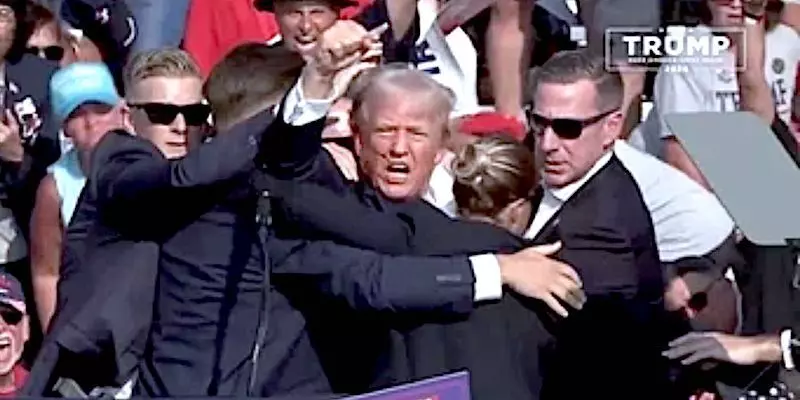Former US President Donald Trump survived an assassination attempt by Thomas Matthew Crooks in Butler, Pennsylvania on July 13, 2024. The shocking incident led to a US Senate report revealing significant security failures by the US Secret Service. The agency was aware of Crooks’ presence on the building for 27 minutes before he opened fire, injuring several people and killing Corey Comperatore.
The Senate report outlines twelve critical points where the US Secret Service failed to take appropriate action to protect the president and eliminate the threat posed by Crooks. These failures directly contributed to the assassination attempt and could have led to a significant loss for the nation, as well as depriving one family of a husband and father.
1. The Secret Service was informed about a suspicious person with a rangefinder near the AGR building approximately 27 minutes before the shooting occurred.
2. At 5:52 pm, at least eight USSS personnel had been notified about an individual on the AGR roof.
3. Shortly before shots were fired, a Secret Service counter sniper saw local law enforcement officers running towards the AGR building with their guns drawn but did not alert President Trump’s protective detail to remove him from the stage. The agent said that while the sight of officers with their guns raised “elevated” the threat level, the thought of informing someone to get Trump off the stage never crossed his mind.
4. Secret Service counter snipers were dispatched to the rally in response to credible intelligence about a potential threat, but most of the agents interviewed by the committee claimed they had no knowledge of any such threat.
5. Advance Agents for the July 13th rally denied individual responsibility for planning or security failures and passed blame onto others, while being unable to identify who held ultimate decision-making authority for the event.
6. Local law enforcement raised concerns about the adequacy of security coverage at the AGR building during the rally.
7. Secret Service advance personnel identified multiple line-of-sight concerns at the Butler Farm Show grounds, including the AGR building.
8. There were two separate communications centers operating during the July 13th rally – one run by the US Secret Service and the other by local law enforcement.
9. Crooks was in the sights of a USSS counter sniper for only a few seconds before the agent fired at him.
10. Advance Agents for the July 13th rally requested additional resources that would have improved security but were denied these assets.
11. The US Secret Service’s Counter Unmanned Aircraft System (C-UAS) experienced technical problems and was inoperable until 4:33 pm, after Crooks had flown his drone near the rally site.
12. Several Secret Service officials reported experiencing radio communication issues at the rally, a common problem for the agency.
The Senate report concludes that the failures in planning, communications, security, and resource allocation by the US Secret Service during the July 13th Butler rally were foreseeable, preventable, and directly related to the events leading to the assassination attempt. Additionally, the report highlights ongoing communication and coordination issues between federal, state, and local law enforcement officials as a contributing factor to the failures at the July 13th event.
The Senate report also criticizes the US Secret Service’s response in the aftermath of the assassination attempt, noting that several requests for information and documents from various agencies remain outstanding. Furthermore, the majority of documents provided by the USSS and DHS have been heavily redacted, hampering the Committee’s ability to conduct its investigation efficiently and effectively.
These failures include.
A lack of clearly defined responsibilities for planning and security at the July 13th rally.
Insufficient measures taken to ensure the effective coverage of the AGR building during the event.
Inadequate coordination between federal, state, and local law enforcement officials.
The denial of requested resources that could have enhanced overall security during the rally.
A failure to communicate critical information about the suspicious person to key personnel involved in the event.
The lack of action taken by the Secret Service to ensure the safety of former President Trump during the assassination attempt.

